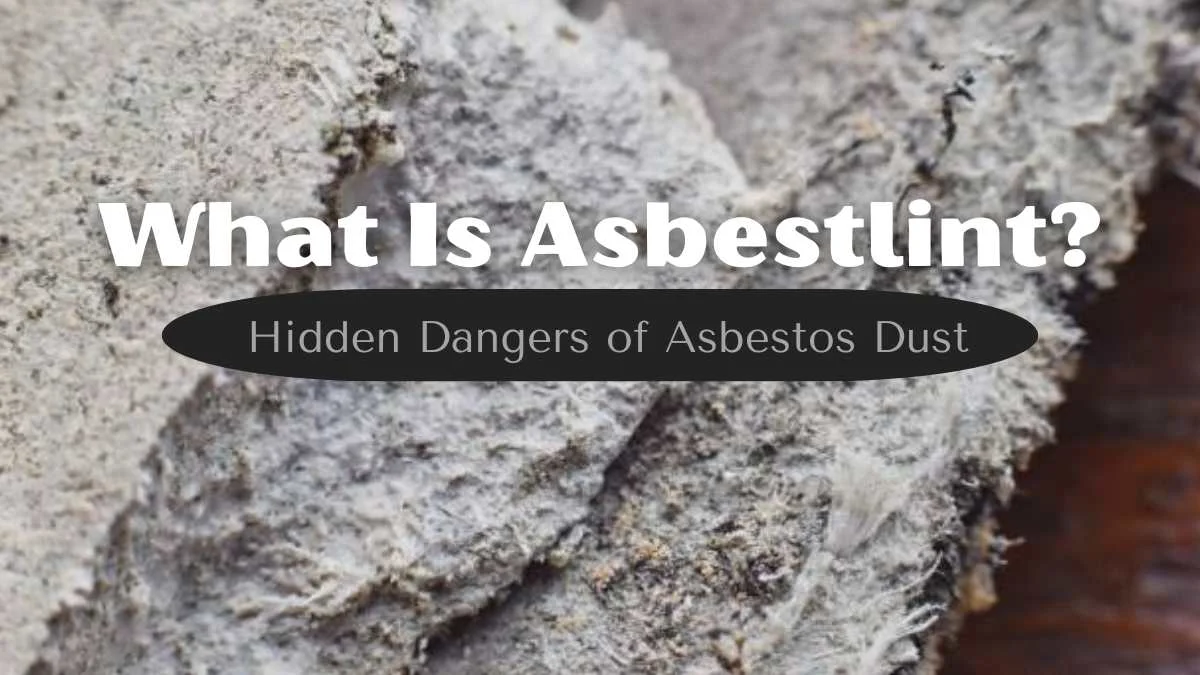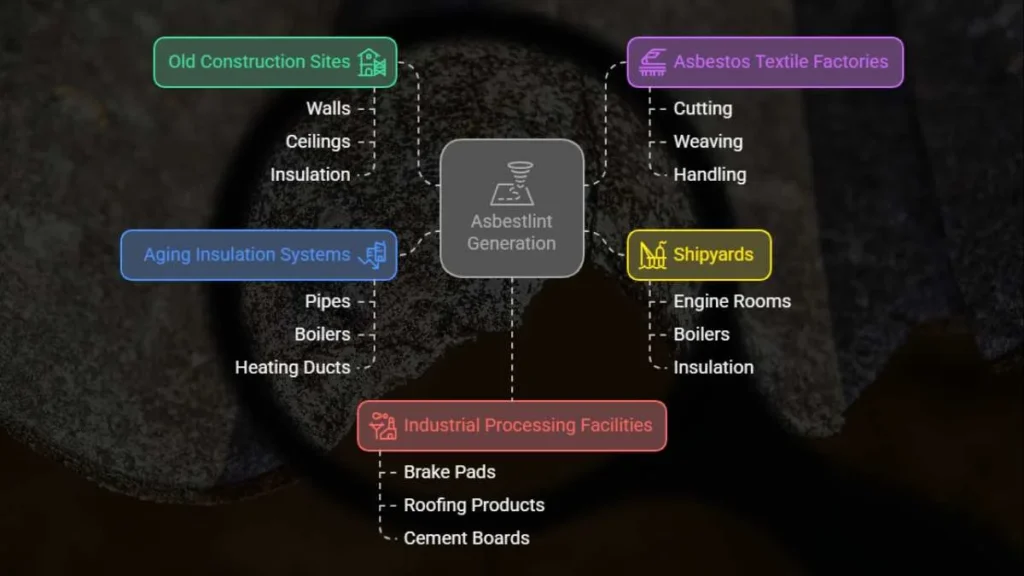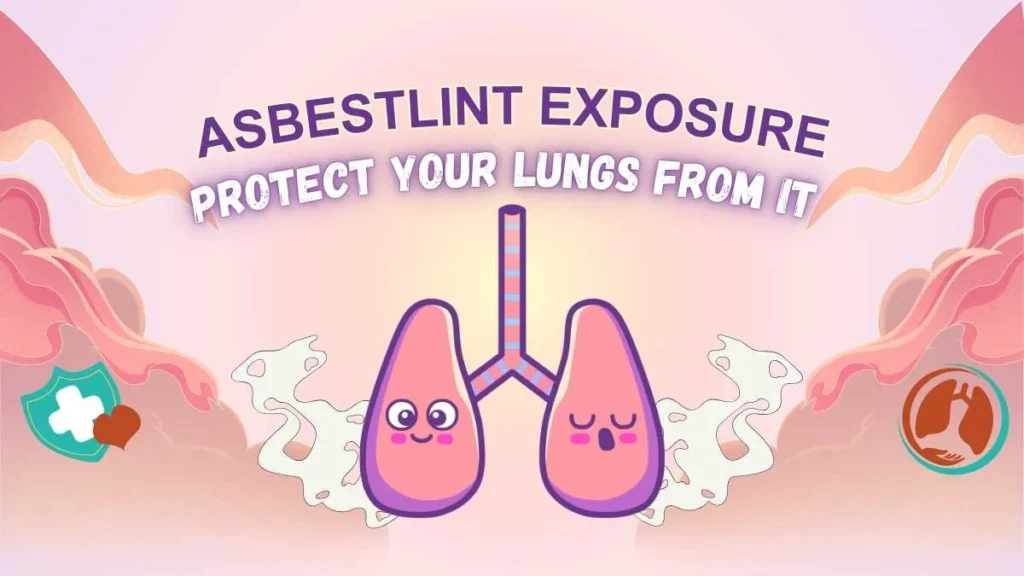HEALTH AND FITNESS
Asbestlint: The Invisible Threat of Airborne Asbestos Dust

Asbestlint is a term created by combining “asbestos” and “lint,” describing a fine, fluffy dust made up of microscopic asbestos fibers. While it might sound harmless, it is one of the most dangerous forms of asbestos exposure. The fibers resemble textile lint but are sharp, needle-like particles that can lodge deep in the lungs, leading to serious illnesses such as asbestosis, lung cancer, and mesothelioma.
Often invisible to the naked eye, asbestlint can be released during the handling, processing, or deterioration of asbestos-containing materials. It is most commonly found in old buildings, asbestos textile factories, shipyards, and industrial sites with aging insulation. Once airborne, these fibers can stay suspended for hours, increasing the risk of inhalation.
Table of Contents
Why Asbestlint is Deadly
The danger lies in its size, shape, and durability. Asbestos fibers are up to 700 times thinner than human hair, allowing them to bypass respiratory defenses and embed in lung tissue or the pleural lining. Once lodged, they do not break down, causing chronic inflammation, fibrosis, and potentially fatal cancers.
The health effects have a latency period of 10–50 years. A worker exposed in their twenties may only be diagnosed decades later, making prevention and early detection critical.
Origins and Common Sources
It is most often generated during mechanical disturbance of asbestos products, including:
Old Construction Sites
When walls, ceilings, or insulation in older buildings are demolished or renovated, asbestos fibers can be released into the air.
Asbestos Textile Factories
Historically, asbestos was woven into fabrics for fireproof clothing, blankets, and industrial insulation. Cutting, weaving, or handling these products generated substantial amounts of asbestos fibers.
Shipyards
Ships used asbestos extensively in engine rooms, boilers, and insulation. Over time, maintenance or dismantling activities produced dangerous asbestos dust.
Aging Insulation Systems
Pipes, boilers, and heating ducts insulated with asbestos eventually deteriorate, releasing fibers into surrounding spaces.
Industrial Processing Facilities
Any plant handling asbestos-containing materials, such as brake pads, roofing products, or cement boards, could generate airborne lint-like particles.

How Asbestlint Spreads
Asbestlint can travel far from its source. Air currents from HVAC systems, construction vibrations, or even the movement of workers can carry fibers into surrounding spaces. Workers who do not use proper decontamination methods may also transport fibers on their clothing, potentially exposing others.
This capacity for secondary contamination is why strict safety controls are mandatory wherever asbestos is present.
Identifying and Detecting Asbestlint
Unlike regular dust, asbestos fibers cannot be identified by sight alone. Laboratory testing is essential. Certified asbestos inspectors typically use air sampling, surface sampling, or direct material analysis to confirm its presence.
When asbestlint is detected, the safest approach is to avoid disturbing the area and call certified asbestos abatement professionals. They use specialized methods such as negative air pressure systems, HEPA-filtered vacuums, and wet removal techniques to control and remove fibers safely.
Safe Management and Prevention
If asbestlint is suspected:
- Stop work immediately, avoid sweeping, vacuuming, or disturbing the dust.
- Isolate the area and restrict access.
- Contact licensed asbestos abatement professionals who follow protocols such as negative air pressure systems, HEPA-filtered vacuums, wet removal methods, and approved disposal procedures.
Personal protective equipment (PPE) respirators, disposable coveralls, gloves, and goggles, is mandatory during removal.

Risk Levels of Asbestlint Exposure in Different Settings
| Environment | Common Source | Risk Level* |
| Pre-1980s building renovation/demolition | Pipe insulation, floor tiles, roofing | High |
| Asbestos textile manufacturing | Weaving/cutting asbestos fabric | Very High |
| Ship repair/dismantling | Engine room insulation, lagging | High |
| Industrial plants | Boilers, turbines, chemical pipe systems | High |
| Weathered ACMs outdoors | Roofing and siding panels | Moderate |
Global and Local Regulations
- United States: OSHA and EPA regulate asbestos exposure, with strict permissible exposure limits (PEL).
- United Kingdom: Control of Asbestos Regulations (CAR 2012) requires licensing for asbestos work.
- Australia: Nationwide asbestos ban since 2003; removal by licensed professionals only.
- Pakistan: Regulations are evolving; public awareness is vital due to ongoing asbestos use in some industries.
Strengthening Safety through Awareness
The most effective defense against asbestos fibers is education and early hazard recognition. Employers, contractors, and property owners should:
- Conduct asbestos surveys before any renovation or demolition
- Maintain ACMs in good condition or encapsulate them
- Train workers on asbestos hazard awareness and safe work practices
- Inform surrounding communities during large-scale asbestos removal
FAQs
Q1: Can asbestlint travel through ventilation systems?
Yes, it can spread via HVAC ducts to distant areas.
Q2: Is there any safe level of asbestlint exposure?
No, even minimal exposure is unsafe.
Q3: Can asbestlint contaminate water or soil?
Yes, it can settle outdoors and pollute soil or water sources.
Conclusion
Asbestlint is one of the most dangerous forms of asbestos contamination, light, invisible, and lethal over time. It can linger in the air, travel far from its source, and remain undetected without professional testing. Exposure can cause irreversible diseases that may only appear decades later.
The danger it poses means that any suspected presence of asbestos-containing materials (ACMs) should be treated as a serious hazard. By understanding its risks, identifying potential sources, and insisting on professional removal, we can protect both current and future generations from one of the deadliest industrial legacies of the past.
-

 FRIENDSHIP MESSAGES4 weeks ago
FRIENDSHIP MESSAGES4 weeks ago100+ Heart Touching Sorry Messages for Friends
-

 ANNIVERSARY WISHES5 months ago
ANNIVERSARY WISHES5 months ago100+ Beautiful Engagement Anniversary Wishes Messages and Quotes
-

 BIRTHDAY WISHES4 months ago
BIRTHDAY WISHES4 months ago300+ Happy Birthday Wishes for Brother | Heart Touching Happy Birthday Brother
-

 BIRTHDAY WISHES5 months ago
BIRTHDAY WISHES5 months ago200+ Unique Birthday Wishes for Your Best Friend to Impress on Their Big Day




































